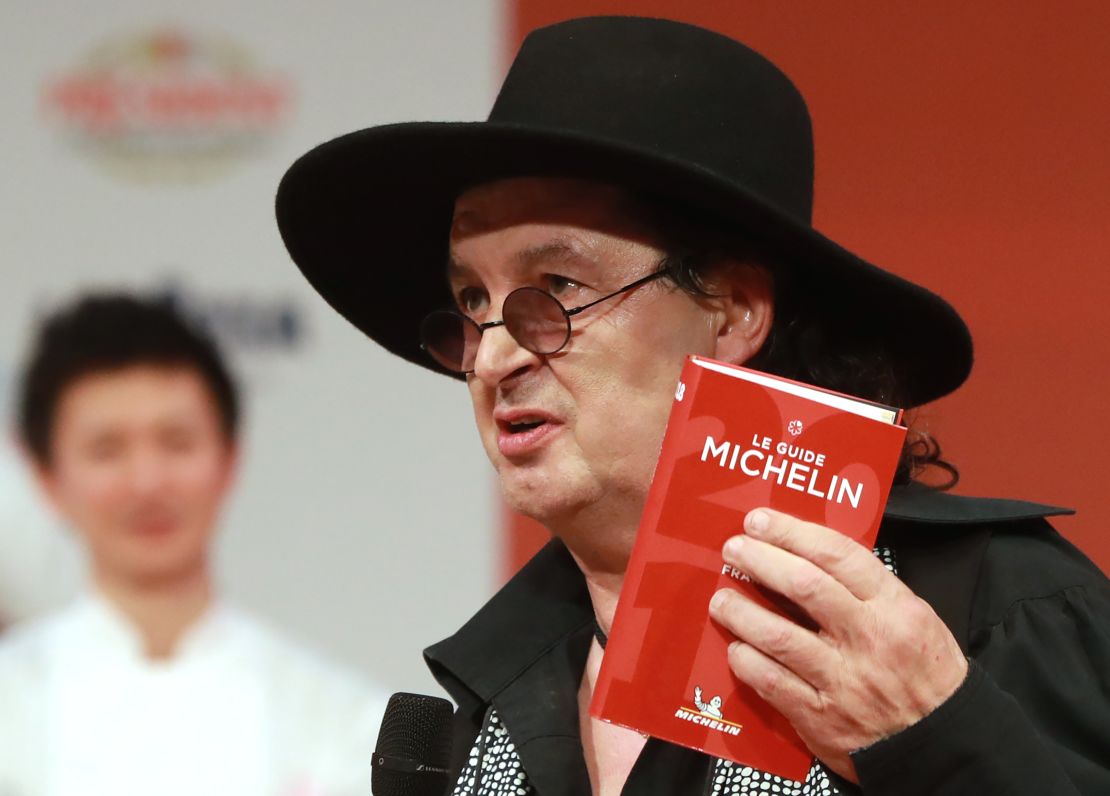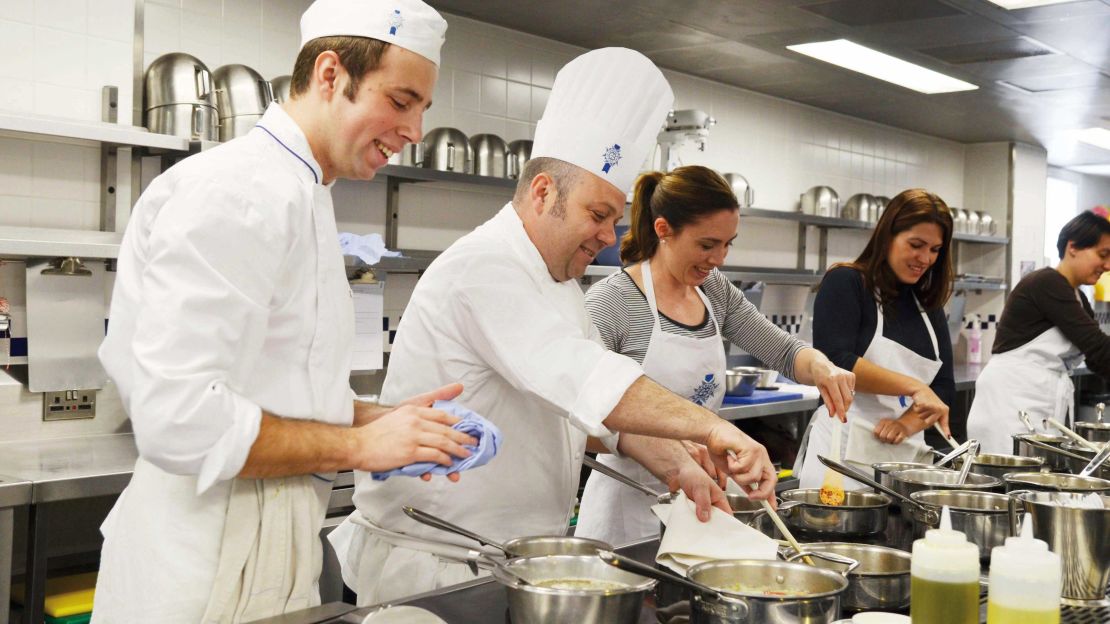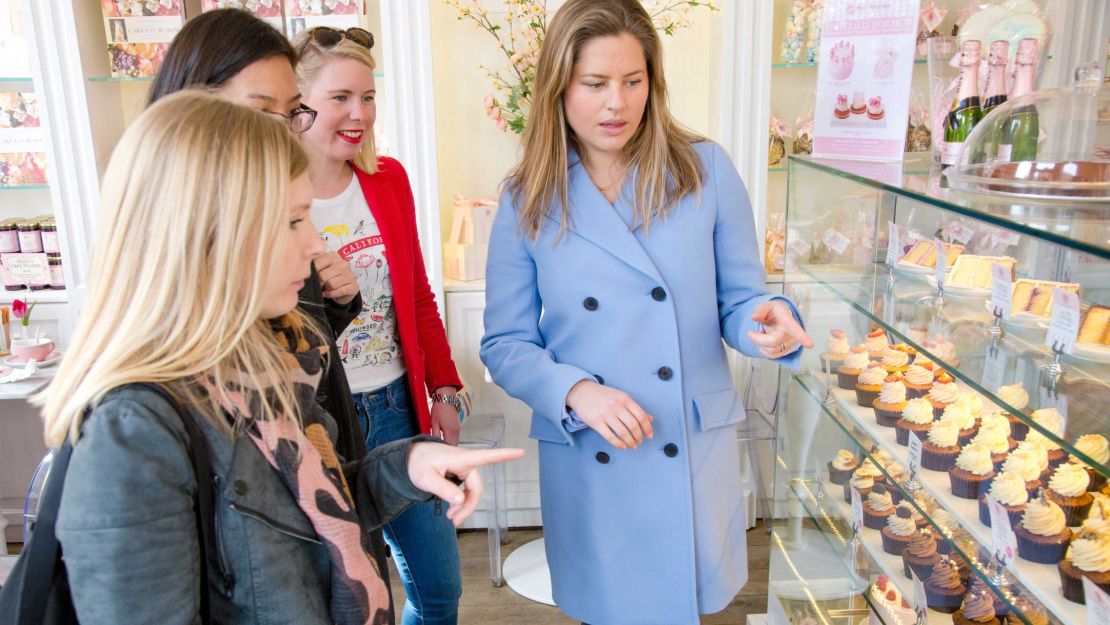Being awarded a Michelin star was once the ultimate culinary accolade – a reward for the punishing hours and dedication to detail that helped usher chefs into the upper echelons of their industry and bring big-spending diners into their restaurants.
But for some in the culinary world, those stars have begun to seem more of a burden than a blessing. In the past few years, several chefs have handed back their Michelin status, closed the doors on their upscale eateries and begun a new foodie life away from the confines of haute cuisine.
The stars have begun to lose their luster.
In 2017 French chef Sébastien Bras requested to be left out of the next edition of the Michelin Guide blaming the unrelenting pressure on maintaining a fine dining kitchen – an issue that’s increasingly becoming a concern in the wider restaurant industry.
More recently, in December 2019, Swedish cook Magnus Nilsson shuttered his two-Michelin-starred eatery Fäviken, citing tiredness and plans to dedicate more time to family.
There have been cases of chefs suing Michelin when they lose a star, and chefs suing Michelin when they gain one, of restauranteurs closing shop on old ventures and opening intentionally low-key locales, instead of lofty fine-dining hotspots.
And among chef graduates, there’s a thirst for new gourmand adventures – in 2020, supper clubs and street food trucks are as favored as the hallowed halls of established restaurants.
Star surrender
Michelin, in case you’d forgotten, is actually a tire company. The Michelin Guide launched at the beginning of the 20th century as a directory for French motorists, detailing hotels, petrol stations and other stopoff points. Stars were awarded to fine dining restaurants from 1926 onwards.
A century later and the guide’s got an indisputable power: gaining – and, by default, losing – a star has the ability to shape a restaurant’s future.
In 1994, a 32-year-old Marco Pierre White became the youngest chef to achieve three stars at his eponymous restaurant.
By 1999, he’d renounced the stars, quitting the restaurant that had made him a culinary star.
Pierre White kickstarted a trend that’s slowly gathered steam over the last couple of decades, with Michelin-based headlines becoming ubiquitous over the last few years.
Take South Korean chef Eo Yun-gwon, who sued Michelin for including his restaurant in the Guide, on the grounds that he’d told them not to. Eo told CNN Travel in 2019: “Michelin guide is a cruel system. It’s the cruelest test in the world. It forces the chefs to work around a year waiting for a test [and] they don’t know when it’s coming.”
Meanwhile, French chef Marc Veyrat – who lost a Michelin star and later lost a Michelin-based lawsuit objecting that decision – echoed some of White’s earlier comments when he called the inspectors “incompetent.”
The restauranteurs who’ve turned their back on the Michelin route have spoken of their desire to focus on a better work life balance.
And with that doesn’t necessarily mean losing your fanbase or curbing your profit – particularly in the social media age, where visitors are perhaps as likely to head to an Instagram-famous eaterie as a restaurant recommended in the Michelin Guide.
“I think more and more chefs are actually saying: ‘Well hang on a minute, I can cook very nice food without being overstressed […] without charging a fortune – just be successful and enjoy life,” says Emil Minev, culinary arts director at Le Cordon Bleu London, the British outpost of the world-famous cookery school.
“When you have your three Michelin stars, you’re basically fighting to keep the Michelin star. You cook for the three Michelin stars, you’re not necessarily focused on your customer, because what matters is your Michelin star.”
Unhealthy work culture

Some chefs are becoming more vocal about the pressures that characterize the profession – and which are exacerbated by the quest to maintain Michelin status.
Following the loss of his Michelin star, Veyrat says he suffered from depression.
Stepping away from the more traditional restaurant route can be a way of dealing with the strain.
A 2017 survey of London chefs by Unite, the British union, revealed than two-thirds of the city’s chefs believe the industry’s culture of long hours is harming their health.
More than half – 51% – said they suffered from depression due to being overworked, while nearly a third said they drank alcohol to get through their shift.
A more recent 2019 survey of British chefs commissioned by Swiss food giant Nestlé suggested that 48% of chefs felt there was not enough done to support their mental well-being, pointing towards staff shortages, lack of time and limited budgets as the chief factors contributing to raised stress levels.
The survey also suggested that 87% of chefs questioned felt “more freedom to be creative in the kitchen would significantly improve stress levels.”
Minev suggests there needs to be a shift in chef lifestyle.
“We have to create altogether a better environment for the young chefs, because the number of young chefs who graduate from school, who go to great kitchens and then they burn out, and then they change careers, is just enormous,” says Minev.
“So it’s our duty and responsibility to make sure that we retain these young chefs and they stay in the kitchens. It’s very important and the only way to do it is to create a better work life balance for them.”
The Guide, for its part, stresses that it does not encourage Michelin-mania – or overtly pressurized environments.
“Running a successful restaurant is tough, and we absolutely appreciate that – so we have never encouraged chefs or restaurateurs to obsess over gaining or retaining Michelin stars,” Rebecca Burr, director of the Michelin Guide Great Britain and Northern Ireland, tells CNN Travel.
“It’s entirely up to them what sort of experience they want to give their customers and how they run their business.”
Burr concedes that a Michelin star carries the power to transform a restaurant’s fortune, but adds “it’s entirely possible to run an extremely profitable restaurant without having a Michelin Star.”
On the other side
The team behind the acclaimed Michelin-starred Checkers Restaurant, nestled in the green landscapes of rural Wales in the UK, made the decision back in September 2018 to relaunch as a more low-key breakfast and lunch establishment, Checkers Pantry.
“We thought long and hard about taking our business in a new direction, having a star is the ultimate benchmark of our trade and we have treasured ours for seven years,” co-owner Kathryn Francis told CNN Travel at the time.
“But it was time to take a new direction – one that frees Stéphane [Borie, head chef] up to do more freelance and private work and one that made having our own business a little more family friendly.”
Catching up with CNN over a year later, Francis says this was absolutely the right choice, and the team hasn’t looked back.
“The biggest change is how refreshing it is not to work during the evenings – late nights and a young family are a tricky combination, getting a better work-life balance was a key motivator and I think we have achieved this on many levels,” she says.
“The transition has been relatively straight forward – our core team remains an integral part of the business and we had our existing customer base as well as reaching a new audience.”
The team has benefited from their change in hours, but Francis points out that owning any restaurant, Michelin-starred or not, comes with its own set of tensions. In the case of Checkers Pantry, she refers specifically to the “unsettling impact of Brexit” and the recent UK election.
“However, I’m hopeful that there will be a new era where we will see enterprise and small businesses encouraged and supported to flourish,” she adds.
Checkers Pantry is currently on the market (due to Francis’ personal plans to relocate, it’s nothing to do with the business, she says.)
The team aren’t looking into new ventures at the present time, says Francis, but she’s still excited about the gear change in her industry.
“The versatility and new operations we see in hospitality are an exciting progression for professionals and consumers alike,” says Francis.
Alternative career trajectories

At the London outpost of Le Cordon Bleu, the renowned culinary school that instructs budding chefs in the nitty-gritty of French cuisine, trainees are getting a taste of the pressures to come.
It’s 8.30 a.m., and the students are already hard at work, meticulously preparing sweet treats in the spotless kitchens and classrooms for judgment at the annual Julia Child Scholarship finals.
The winner earns a sponsored slot on Le Cordon Bleu’s Diplôme de Pâtisserie and Diploma in Culinary Management.
It used to be that the Diplôme de Pâtisserie, Cordon Bleu’s pastry qualification that gives students a grounding in producing perfect croissants and other baked delights, or Cordon Bleu’s Grand Diplôme – the crème-de-la-crème of culinary qualifications – were the first steps to a career spent in the world’s acclaimed kitchens.
Cordon Bleu’s Minev, who previously worked as executive chef at the Shangri-La Hotel in London, considers that there’s been a change in dining habits. People don’t necessarily always want to spent three or four hours in a restaurant, he says, and they may prefer a relaxed environment.
“But the one thing that hasn’t changed is people still look for quality food,” he says.
Whether they’re going to an acclaimed Michelin-starred restaurant or heading to a food truck that serves the best burgers in the city, diners still expect a high standard.

For Lynne Staartjes, her decision to enrol on the Diplôme de Pâtisserie was never predicated by a desire to work in the Michelin-starred environment.
She’d had that experience before, working as a pastry chef in Paris when she was 18, and was reluctant to return.
In July 2017, shortly before graduating from Cordon Bleu, Staartjes established Sweet Tooth Tours, guiding tour groups to the best sweet treats in London and Paris.
Staartjes thinks her in-depth understanding of how to prepare the perfect pastry elevates her tour experience, but she can’t see herself working in a kitchen any time soon.
“I hope fine dining restaurants will continue, absolutely,” she tells CNN Travel. “But I made that conscious decision that I would rather do something a bit more creative, in a sense.
“Working in a restaurant, you need a tremendous amount of creativity to put together dishes and it’s an extremely competitive environment – but creative, I think, in a different way,” she says.
Casual versus “cutthroat”
Indian-born chef Dhruv Mittal trained in haute cuisine, graduating from Le Cordon Bleu with a Grand Diplome in 2014 and going on to work in Michelin-starred restuarants in the UK and India.
But Mittal knew he wanted to break from that tradition, start a business that was personal and different. He experimented with a supper club at his London home, and later opened his casual Indian restaurant DUM Biryani House in 2016. It’s since gone from strength to strength.
Mittal tells CNN Travel that his aim was: “Good food and a friendly price point without it being something which is taken to a stuffy fine dining level, which often I found, in my past, removed a lot of the fun behind it.”
Conscious that working in a fine dining restaurant can entail “a disregard for your own mental health and physical health”, Mittal was drawn to the more connected, personal feel of a casual eaterie.
“You feel like people really care about how you feel day-to-day and how able you are to be able to do the job – whereas in a fine dining setting, it is very much you either do the work or you get out, and I think it is very cutthroat,” he says.
But while Mittal consciously tried to echew the the high-pressure, high-octane restaurant environment, he says it’s hard to avoid – even when you’re running the show.
“I thought that when I started the restaurant, I could negate or ignore a lot of the formal structure around how an operation operates – and I could create an environment which is fun and great for my employees and really take care of them,” Mittal says.
“But actually now, after a couple of years of working in the industry, and managing a couple of restaurants, there is a lot of perfection that we still demand from our employees.
“There needs to be discipline in order for the business to work all the time, to get the numbers that you need to be successful.”
Supper clubs and street food stalls
World's cheapest Michelin-starred meal
Increasingly, food trucks, supper clubs and market stalls are as much “on-the-map” as Michelin-starred eateries.
Sometimes there’s even an overlap: in Singapore, two street food stalls – Liao Fan Hong Kong Soya Sauce Chicken Rice & Noodle and Hill Street Tai Hwa Pork Noodle earned Michelin stars in 2016 in recognition of their tasty food on the go.
“The Michelin star recognizes the quality and consistency of the food on offer, regardless of how formal or informal a setting is,” says UK-Michelin director Burr.
“The situation becomes more complex with food trucks or supper clubs because of the mobile nature of the business and the potential for limited public access. Essentially, if our readers and the users of our apps can easily access an outlet, and the food on offer is consistently excellent, then it can be considered.”
Luiz Hara, a Japanese-Brazilian chef who lives in London, is an ex-banker who graduated from Le Cordon Bleu with Le Grand Diplome, the top qualification.
He now runs the London Foodie Supper Club hosting supper clubs in his home. He started off catering for a max of 16 people, now it’s up to 32 – but Hara doesn’t want it to be any more than that.
It’s easier, he says, because he doesn’t have to pay rent on a restaurant building. He also enjoys greater creativity and a more flexible lifestyle.
His work, he says, goes back to the crux of why he became a chef in the first place – because he loves to cook.
“I couldn’t possibly do the kitchen work, day in and day out,” Hara tells CNN Travel.
“For me, it was more being able to have a balanced life, a balanced lifestyle. I didn’t want to burn out either. So I felt like, if I’m going to do this, it’s going to be something that I’m going to enjoy.”

















